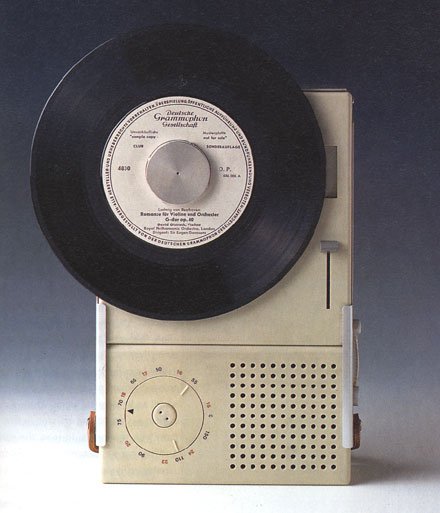How might you relate Dieter Rams' 10 principles of good design to your domain?
Dieter Rams designed the first walkman
Think Jar Collective strives to find links between disparate ideas because it is often a way to creativity and possible innovations. If we always look in the same places to generate new ideas we likely won't come up with anything fresh and relevant. Even if you are not interested in industrial design, take a look at Dieter Rams design principles and see how you might apply some of them to a challenge or problem you are working on in an unrelated field. You might surprise yourself by the connections and fresh insights you discover.
Dieter Rams (b. 1932-) is a legend of the industrial design world and sometimes referred to as a designer's designer. He designed the first walkman in the late 50's as well as a vast amount of household products you've likely come across in the past. 'As head of design at Braun, the German consumer electronics manufacturer, Rams emerged as one of the most influential industrial designers of the late 20th century by defining an elegant, legible, yet rigorous visual language for its products'(1).
You know that style, 'less is more' that is commonly referred to in pop culture? Well, you could probably trace that idea back to Dieter Rams and his approach to design. Actually he put the idea like this, "less, but better" (2). You can also see this design style in Apple's products and recognize how they were heavily influenced by Rams and his 10 principles of good design listed below. Really, the similarities are striking between Rams' timeless designs developed in the sixties and some of Apple's famous devices of the last few years.
1958 Dieter Rams Radio next to an Ipod
Rams' record player known as, 'Snow White's Coffin'. Notice the white on white design? Apple does the same
Looks a lot like an iMac...It's a speaker designed by Rams
Dieter Rams 10 principles of good design (should add... Good design principles sound better in German)
Whether you are designing a service, a product, a power point, a website, a business plan or problem solving a challenge at work, reflect on how you might apply some of Dieter Rams 10 principles to your domain.
As an example, in my domain of trying to improve quality in human services I'm reflecting on whether our services to people with disabilities are understandable and relevant to our clients and their families. Are our services band-aid solutions or do they provide long lasting benefit that improves quality of life? What does a quality service that is thorough look like? Are our services unobtrusive? What does an obtrusive service look like? What does a quality service look like in my field? We never think of a service being beautiful or being aesthetically pleasing, what new thinking might emerge if we explored ideas of creating a beautiful human service? Here, what first comes to mind is I think a human service is beautiful if it focuses on the individual and their true needs and aspirations, not the needs of a bureaucracy. The last principle, 'good design is as little design as possible' is interesting in that it causes me to reflect that often human service models are not client friendly and can be too complex for a client to relate to. Maybe to lessen the fog of complexity in service systems we need to remember to ask ourselves, what is the essence of what our services to people are supposed to provide? What is the real point of our services?





